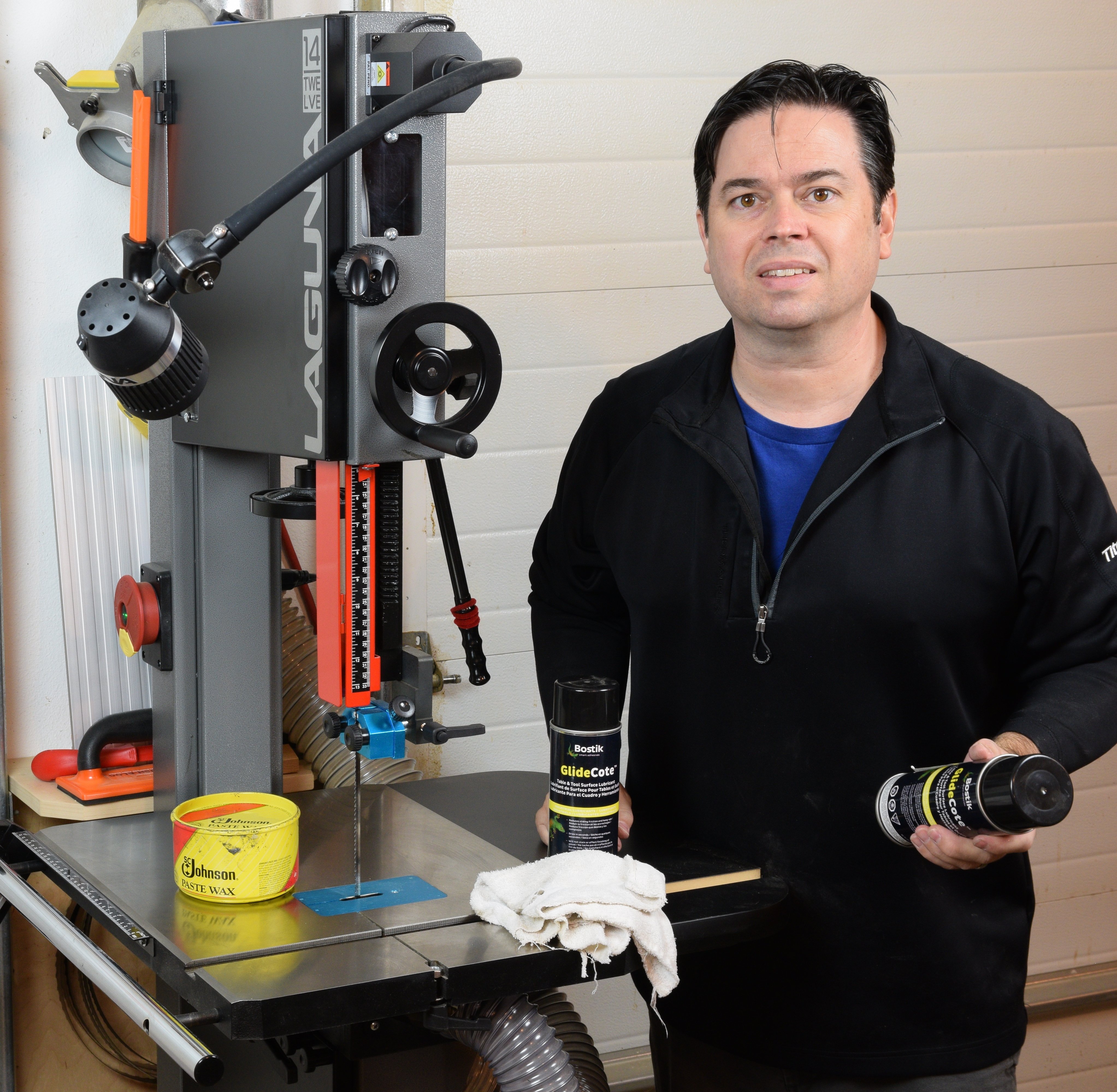Shop chores aren’t usually at the top of my list, but when I do get around to them, I’ll treat my cast iron tops to reduce friction and help prevent rust. There are two common products to protect cast iron… spray protectants, and paste wax. Spray-on products are probably my favorite, but they both have pros and cons.
A Case for Sprayed-On Protectants

I’ll often use a product called Bostik Glidecote on tablesaws, jointers, & bandsaws to reduce sliding friction. It makes a significant difference in that regard, especially at the tablesaw where you’re pushing large panels across the cast iron surface. Beyond friction, Bostik Glidecote and similar spray-on products help to ward off rust. Follow the manufacturer’s recommendation of the product you’re using, but I often spray the product onto a rag for best results. Spraying the product directly on cast iron often leaves spotty residue on the tool surface. This residue can be unsightly and difficult to clean off, so I try to prevent the problem right from the start. By spraying the product onto a clean rag first, it will apply much more evenly to the cast iron. Let the product haze over for a minute or two, then buff it clean with a fresh rag.

However, there are some significant downsides to spray-on products. They come at a higher cost (per can) than paste wax, and the spray won’t last as long as a tin of paste wax. Availability may be an issue in your area, and most hardware stores don’t carry the spray-on protectants. You’ll be more likely to find them at specialty woodworking stores or machinery retailers. Finally, the spray creates a noxious odor that irritates the lungs. For this reason, I recommend wearing a respirator with an organic vapor filter, and working in a ventilated area.
Good Ol' Paste Wax

Stubborn rust spots are the bane of any woodworker, but are
easily removed with the method described here.
Paste wax is another good option to protect your cast iron surfaces. You’ll reduce sliding friction and get temporary rust prevention with an occasional coat. One common product is Johnson’s Paste Wax, which I’ve been using for years. Whatever product you select, make sure it’s a clear paste wax without stain or color added.

Paste wax can be applied with a clean rag, but if you have stains or surface rust to remove, consider using an abrasive pad. If I have dark spots or light rust on a cast iron tool, I’ll apply the paste wax with a Scotchbrite pad. The maroon pads are a medium grit, and that might be enough to do the trick. For more stubborn spots, try green Scotchbrite pads. Wipe the wax on, cleaning away spots as you go, and let it dry to a haze. Buff the wax with a fresh rag, and repeat as necessary. You may be surprised at all the grime that comes off a well-used tablesaw or bandsaw table.

We know that paste wax is cheaper and more widely available than spray-on products, but are there any negatives? Sometimes paste wax leaves a greasy residue when freshly applied. Depending on temperature and humidity, this may or may not be an issue for you. If it’s warm and dry, the wax will behave as you probably expect. If the air is cold and damp, the wax may not haze over as quickly as you think. In this case, give the wax more time to dry, and buff the surface a second or third time as needed.

Tough Spots 
When working tough stains and rust spots with a green Scotchbrite pad, you may notice it changes the sheen of the tool surface. To even out the sheen and give the tool a like-new appearance, try one additional buffing step. Attach a fine grit Scotchbrite pad (like white or light grey) to an old orbital sander, and work the entire tool surface. In these more aggressive cleaning sessions, you’ll clean the top with shop paper towels, and re-apply a coat of wax as described earlier. I love the ‘industrial grey’ look this gives my tools, with just a little shine.
Keep rust at bay and enjoy your shop more with a fresh coat of wax or spray-on protectant on all your cast iron tools!

Willie Sandry is a freelance writer for all the major woodworking magazines, blogger, crafter and upholsterer. See more woodworking posts at the Thoughtful Woodworker YouTube channel or check out projects, blogs and reviews at Lumberjocks.com.

